How Legends Are Made
James Jean updates the epic tradition for contemporary values of self-determined identity, inviting his viewers to imagine themselves in his myths.
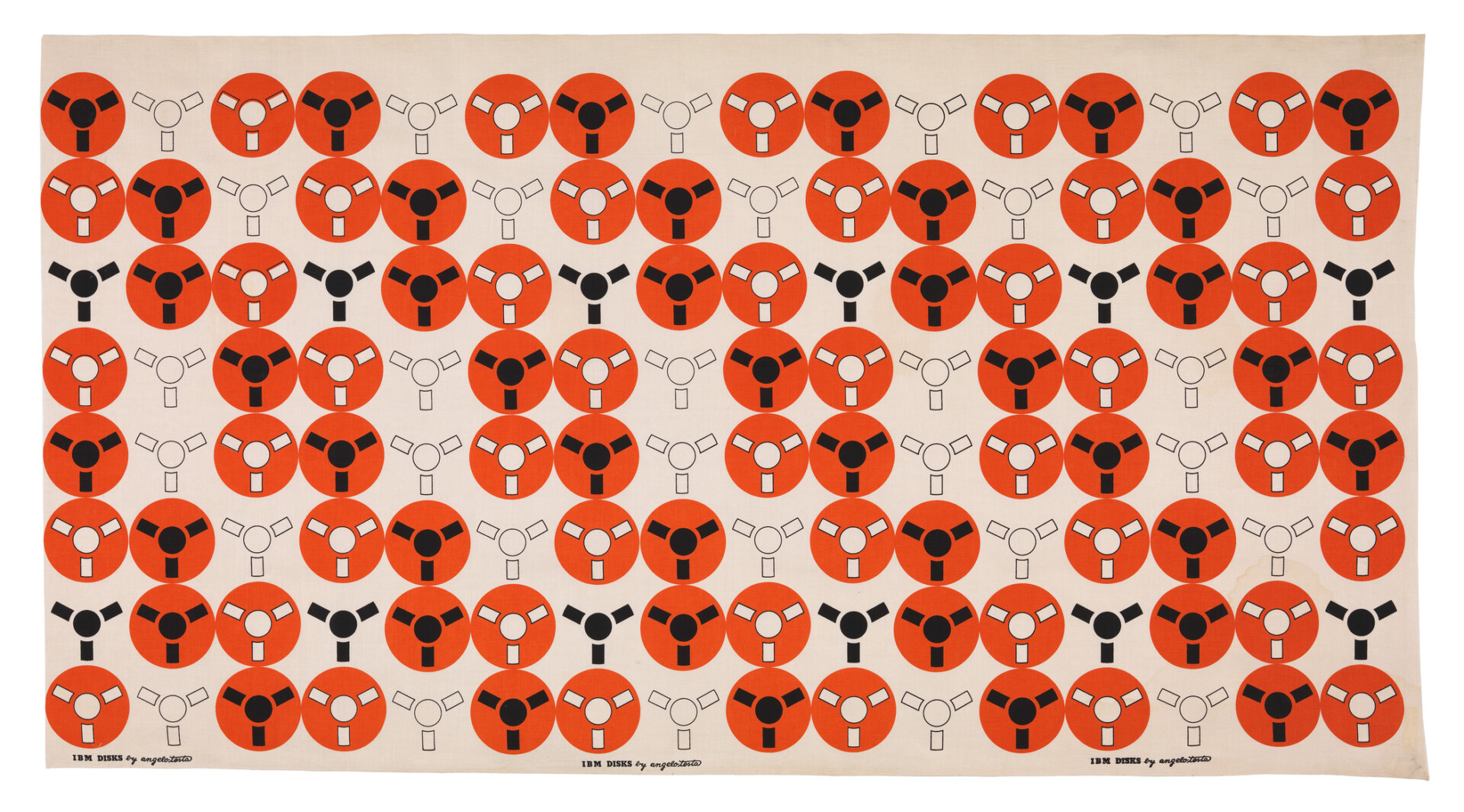

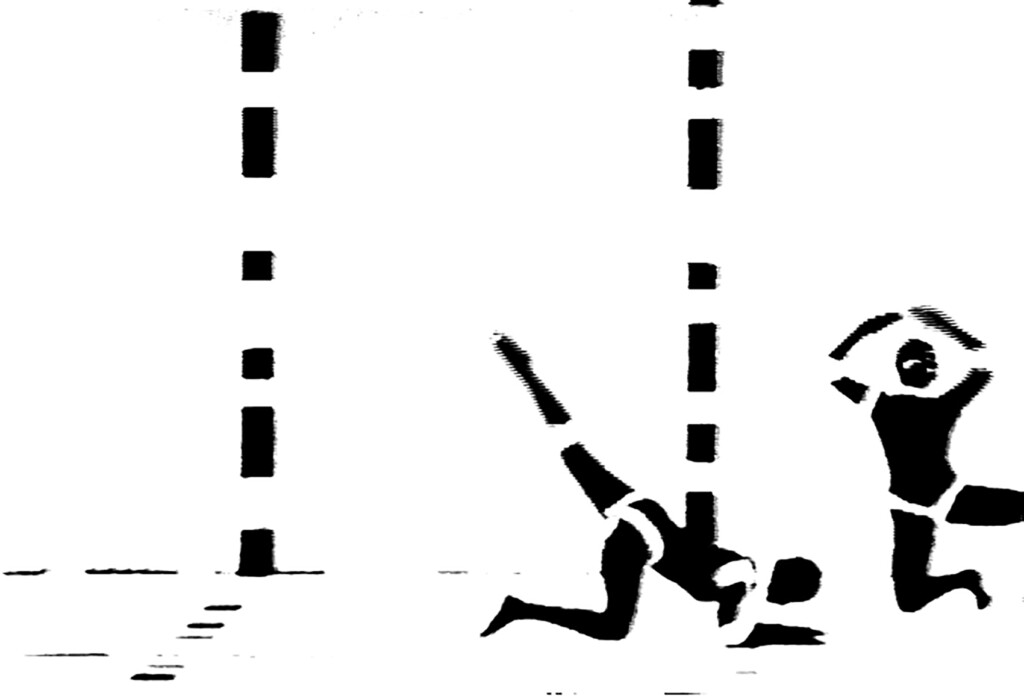
The explosion of NFTs and artistic engagements with blockchain, neural networks, machinic vision, generative adversarial networks, artificial intelligence, and big data has prompted an exponential rise of interest in the history of computer art. Extending as far back as initial encounters with mainframes housed in corporations during the early 1950s and expanding to encompass an array of artworks variably deemed generative, cybernetic, systems-based, and informational, this prehistory of our digital present poses difficult challenges to anyone looking to chart a path. Take a narrow view of art made with computers and you are limited to machine-generated music, algorithmic poetry, and abstraction programmed in Fortran and produced by ink plotters. But try to address the broad spectrum of artworks invoking the computer as metaphor, conceptual framework, or political subject and you are left grappling with the entirety of artistic production spanning decades, as computers dictated many of the terms (systems, communication, code, feedback, control) through which artistic production, reception, and politics—in other words, art’s significance writ large—were articulated and understood.
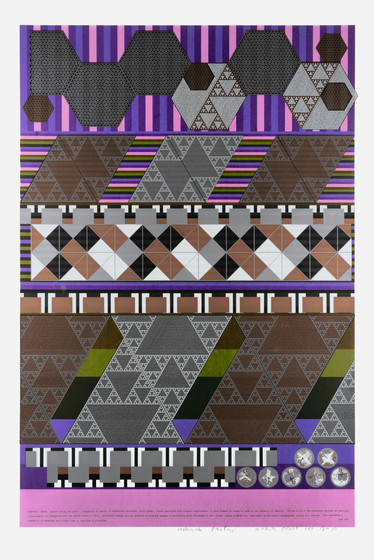
“Coded: Art Enters the Computer Age, 1952–1982,” on view at the Los Angeles County Museum of Art through July 2, restores a sense of unruliness to the history of computer art by exposing audiences to the range of practices that emerged from artists’ experiments at the nexus of computation and creativity. With sixty-eight artists and a sprawling selection of media and materials—painting, film, animation, sculpture, assemblage, graphic design, music, dance, performance, photography, poetry—the exhibition succeeds in deconstructing any narrow conception of what computers were or how they could be used in art. Across six thematic rooms, the computer emerges variously as a medium for artistic expression, a model for artistic production, an impetus for transdisciplinary collaboration, a source material, a stylistic inspiration, and cultural referent. Many of the wall texts and catalogue essays are devoted to elaborating the complex and often excruciatingly laborious procedures of translation and transmediation that went into making these works—processes belied by the formal simplicity of the results, as in John Whitney’s abstract animated film Permutations (1968) or Frieder Nake’s geometric mazes in the “Walk Through Raster” series (1967). The first section of the exhibition is devoted to “The Computer and Popular Consciousness” and includes paintings, photographs, graphic design, and conceptual artworks drawing on the formal characteristics of computer—punch cards, hard drives, control room architecture, corporate structures. Henri Cartier-Bresson’s 1967 photograph of the JFK Space Center hangs close to Lowell Nesbitt’s hyperrealist paintings of the IBM disk pack from 1965 and across from Eduardo Paolozzi’s colorful prints of dots and pixels from the Universal Electronic Vacuum: Memory Matrix portfolio (1967).
Computers resensitized artists to craft techniques and the expressive capacity of materials—re-enchanting the creative process as a quasi-mystical, alchemic endeavor.
If most contemporary viewers imagine computers as a dematerialized network, where communication takes place instantly and wirelessly across devices that disguise their inner workings, “Coded” reorients us to understand computers as a massive complex of material infrastructure. One gets the sense that while computers undermined individual authorship (by delegating parts of the creative process to machines, for example, or requiring collaboration among experts in different fields), they resensitized artists to craft techniques and the expressive capacity of materials—re-enchanting the creative process as a quasi-mystical, alchemic endeavor.
But where “Coded” explodes the computer as a medium, it reinscribes this variety of practices into the most unimaginative art-historical terrain possible. The exhibition is explicitly a recuperative project aimed at situating early computer art within mainstream art history—the terms of which, “Coded” presumes, are static and set. The framework and organizational strategies reduce artistic experiments with computers to a set of formal operations and aesthetic strategies also found in minimalism’s embrace of seriality, conceptualism’s deference to systems and rules, and op art’s style of geometric abstraction. A room devoted to “Mathematics and Computational Aesthetics” installs Whitney’s film, Nake’s series, Frederick Hammersley’s computer prints, and Desmond Paul Henry’s swirling sketches made with mechanical components of analog computers amid paintings by Victor Vasarely and Bridget Riley, as well as Donald Judd’s work based on the Fibonacci series. This curatorial montage is suggestive, but it sidelines the differences between distinct techniques of production (hand-made and machine-fabricated, digital and analog) and the significance of specific materials— such as Riley’s investment in the history of painting and perception, Judd’s use of industrial aluminum, and Henry’s retooling of bombsight technologies. This effaces any sense that material decisions have social significance, that there might be philosophical and even political implications enmeshed in these experiments with creative production and artistic form.
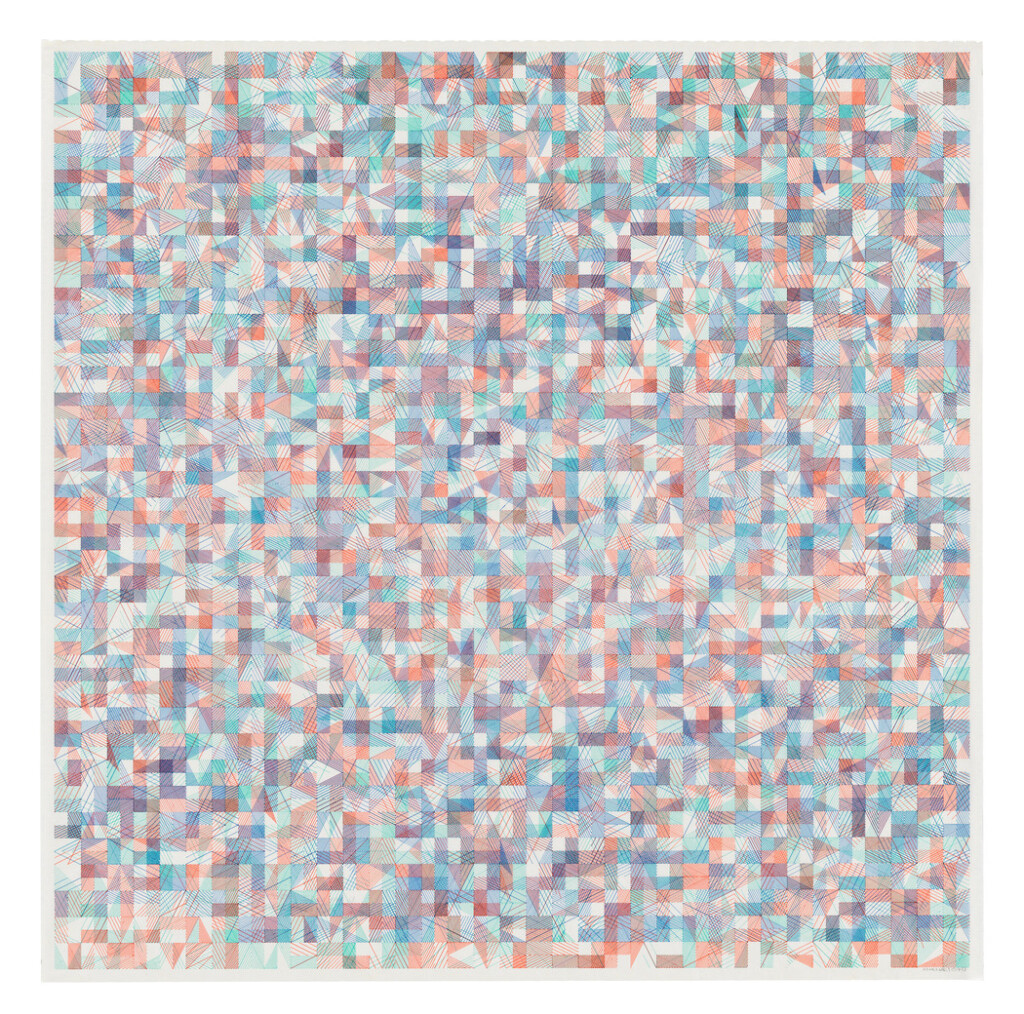
What this emphasis on formal affinities and simultaneous co-discovery obscures is why all these artists were so invested in rules, rationality, and mathematical procedures—and the distinct ambitions, affects, and agendas that motivated them. In an area devoted to “Algorithms and Generative Text,” Sol LeWitt’s Incomplete Open Cubes (1974/1982) is laid out in the direct sightline of Manfred Mohr’s film Cubic Limit (1973–74). This leads into the next section, occupying the same large gallery, on “Encoding Art.” Here, viewers are asked to take stock of the frequent use of art-historical references. Most notable is the recurrence of Piet Mondrian and Paul Klee, whose geometric abstraction became a stylistic touchstone for programmed works by A. Michael Noll, Hiroshi Kawano, and Vera Molnár. The wall text suggests such quotations helped legitimize computer-generated works as art—rather than, say, challenge the category of art or retrospectively recast creative production in algorithmic terms. The comparison of LeWitt and Mohr demonstrates some of what is lost here. Inspired by German philosopher Max Bense’s generative aesthetics and responding to postwar conditions in Europe, Mohr saw mathematical procedures as providing an objective basis for aesthetic experience and interpretation—a ground that would render art resistant to ideological capture. For LeWitt, following rules to their extreme had the opposite effect, uncoupling meaning (and rationality along with it) from all stability or solid ground. The kinds of analysis, questions, or even terms that might allow an audience to recognize the social significance of these procedural and material decisions are displaced by an emphasis on surface resemblances.
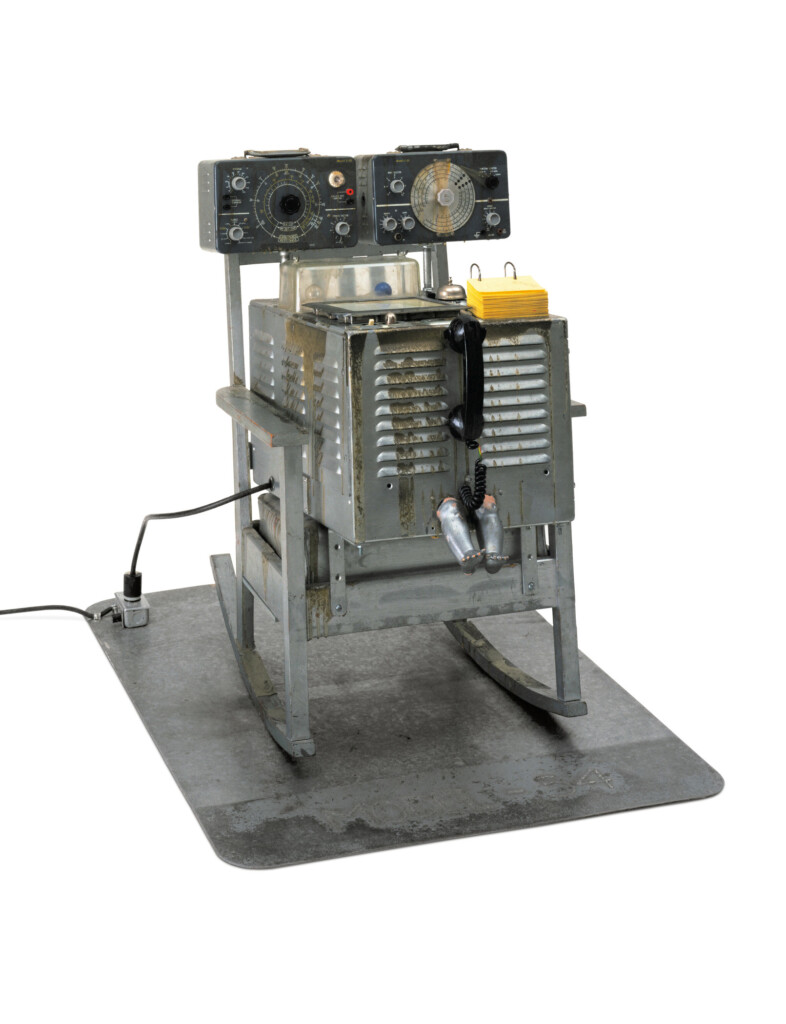
This is not to say that there are no politics in “Coded”—they are just kept separate from the formal experiments on display. This, too, is a disappointing retread. The section title “The Computer and Politics/Open Scores” is symptomatic of this problem, with the two strategies—using computers to express political positions; employing open structures to invite audience participation and multiple interpretations—sutured by a heavily burdened “/” instead of elaborating how they might relate. In this room, there are the diagrammatic utopias of Stephen Willats: Homeostat Drawing No. 1 (1969), an abstract envisioning of human interconnection penciled directly on the wall, and Life Net Encoder (1974), a vinyl piece that schematizes relations as they progress between two individuals. Willats’s works stand across from Charles Csuri’s Random War (1968), which uses the generative structure of algorithms to elaborate the cruel unpredictability of combat, and Waldemar Cordeiro’s The Woman Who is Not B.B. (1971), a pixelated close-up plotter drawing of a young Vietnamese woman’s face, whose expression conveys a condition entirely unlike that of Bridget Bardot (B.B.), suggesting that our admiration of one figure means refusing attention and resources to another. The final room, “Information as Art/Art as Information,” includes works of institutional critique: Hans Haacke’s News (1969), where pages of printed headlines interject the news cycle into the gallery space, and Juan Downey’s sociological map of the art world (1970). These are interspersed with Agnes Denes’s inscrutable tables charting everything from political structures to life cycles, and Collette and Charles J. Bangert’s ink plotter drawings that overlay the structure of grass with algorithmic growth (1979–80). Information is split between content (political messages) or form (recasting set ideas in computer-age terms).
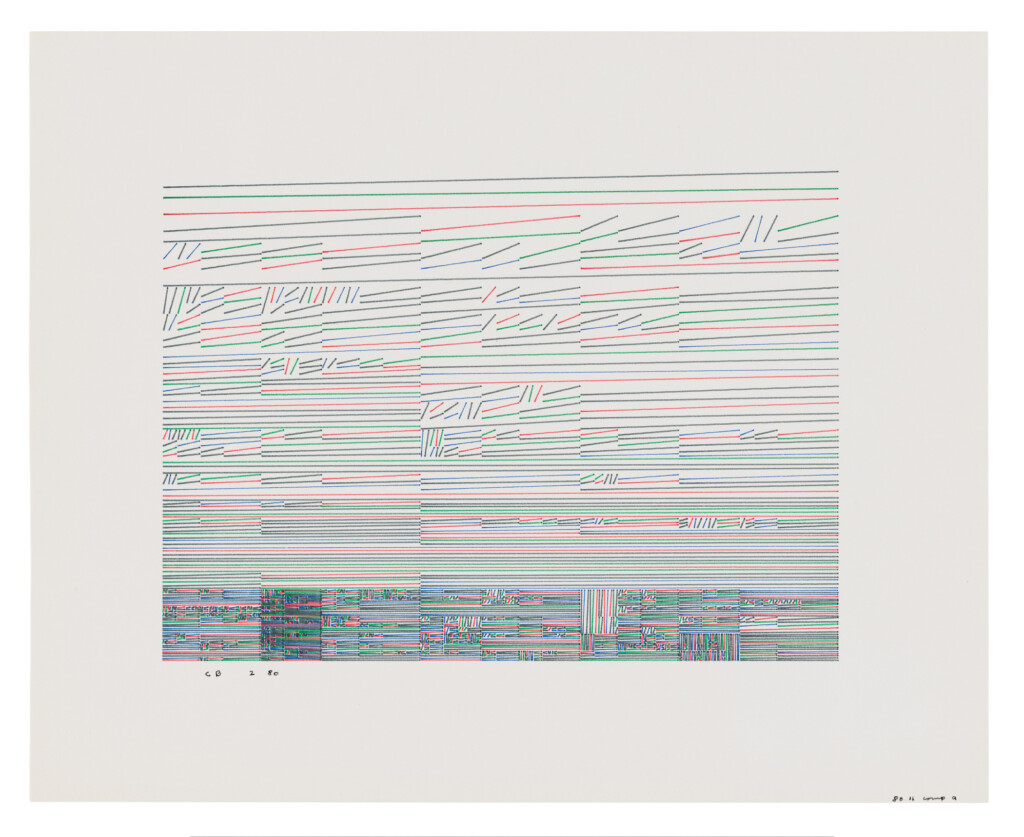
“Coded” assumes the separation between artists invested in formal experimentation and those who direct their artworks towards political aims. It reinscribes the opposition between autonomy and instrumentality that so many of the artists whose work is included were trying to complicate and undermine. These connections are, admittedly, difficult to see. But this is what the early history of computer art requires: a renegotiation and reimagining of what, where, and how social and political issues materialize in—and are altered by—art. Films such as Analívia Cordeiro’s M3X3 (1973) and Lillian Schwartz’s Pixillation (1970) draw on computers to materialize our entanglement with systems and thematize how creativity and agency arise from these encounters with code. Cordeiro’s algorithmically generated choreography directs dancers adorned in black-and-white striped bodysuits to move through an equally high-contrast, gridded set; Schwartz’s computer-generated animation splatters and squirts colorful splashes of abstract, biomorphic shapes across the screen, interspersed with geometric patterns of squares and diamonds. Bodies and shapes (respectively) cohere, dissolve, mutate, and vanish—a progression that resonates with the films’ physiological impact on the viewer, as the flickering forms splinter and scatter your field of vision and destabilize your point of view. (The exhibition begs for the sensorial overload of expanded cinema and kinetic environments—both movements that have a more direct, fascinating relationship to early computer art than some of the other touchstones included in the show.)
“Coded” reinscribes the opposition between autonomy and instrumentality that so many of the artists whose work is included were trying to undermine.
Many of the works in “Coded” resist the simple oppositions deployed by the exhibition’s framework, offering new ways of conceptualizing technology’s competing—but not easily synthesized—effects. After all, so many artists were drawn to computers for how they embedded formal with political issues and were overflowing with metaphorical and symbolic significance—from the most utopian fantasies of technologically-enabled freedom to visceral inklings of an era defined increasingly by insidious, invisible networks of domination and control. What, after all, does the process of coding or being coded entail? Codes (language, conventions, protocols, patterns) are the material conditions for artistic expression and communication, political and otherwise. They engender creativity and enclose it—something recognized by artists in the early decades of computers and embedded in even the most formalistic art. It is important to explore these histories not because they provide precedents for our hyper-saturated, technological present but for the ways they put pressure on our conceptions of art and technology, staging experiential encounters with complexities otherwise effaced by “and”s, “at the same time”s, and “/”s.
Lindsay Caplan is a professor of art history at Brown University and the author of Arte Programmata: Freedom, Control, and the Computer in 1960s Italy (University of Minnesota, 2022).
